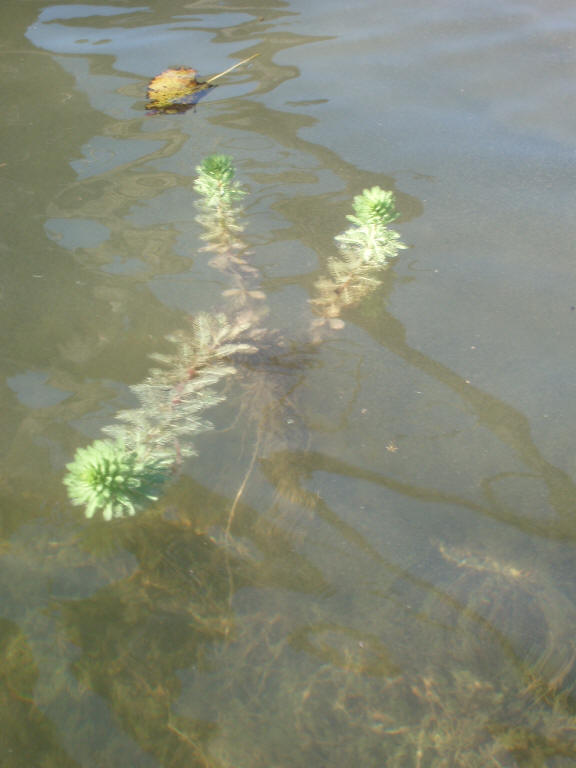
9/16-19/ 08 Pictures, Meserve Lake

Myriophyllum aquaticum in five feet of water
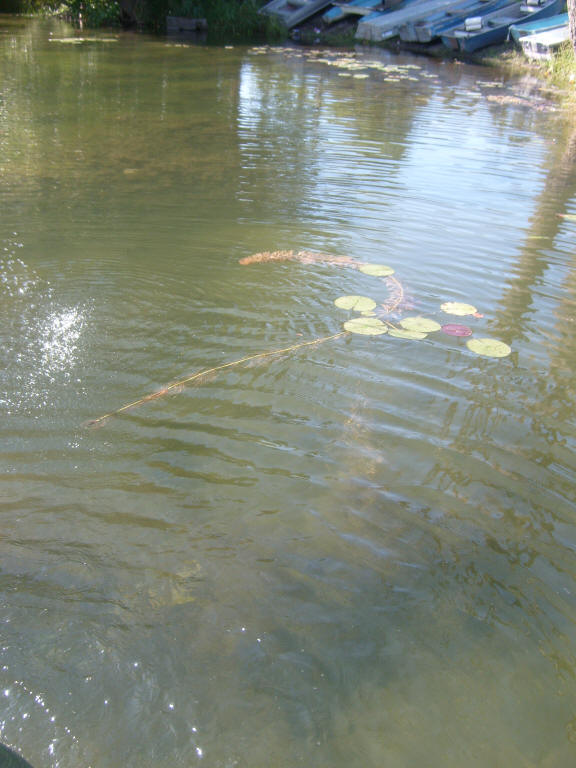
A free-floating Parrot Feather plant near the Meserve Lake Outlet
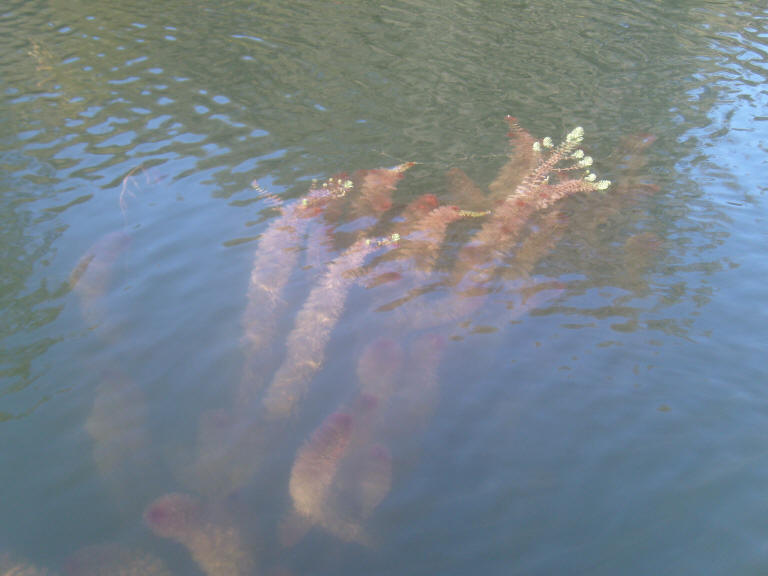
Aquaticum plants in deep water
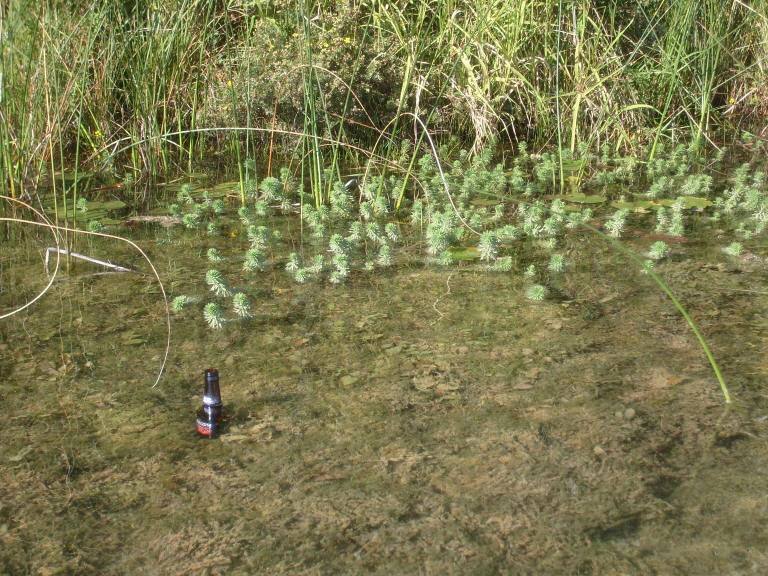
Shallow water plants along the lakes north side
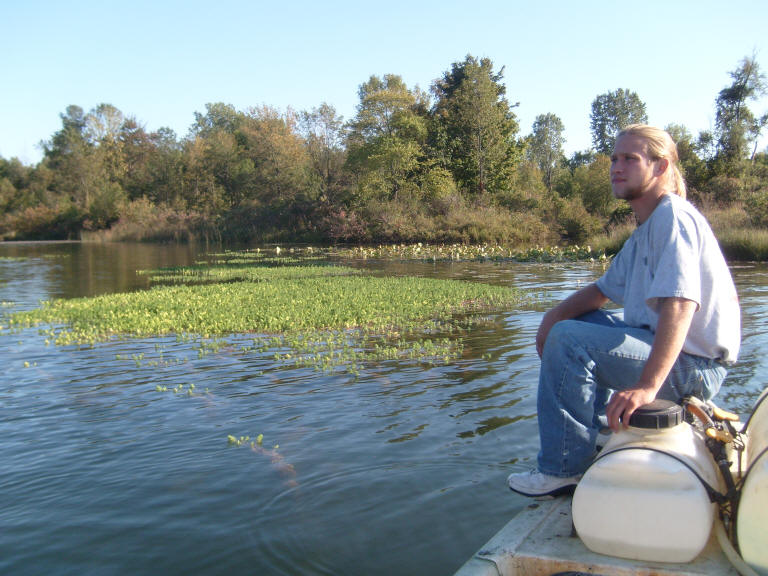
Meserve's largest aquaticum colony forms a surface mat near the lake's southeast inlet in 8-10 feet of water
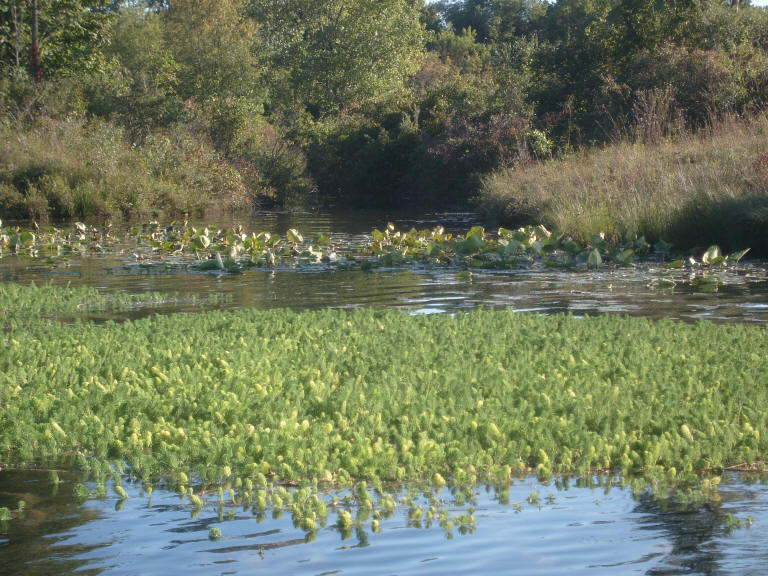
Close-up of the colony in the previous picture
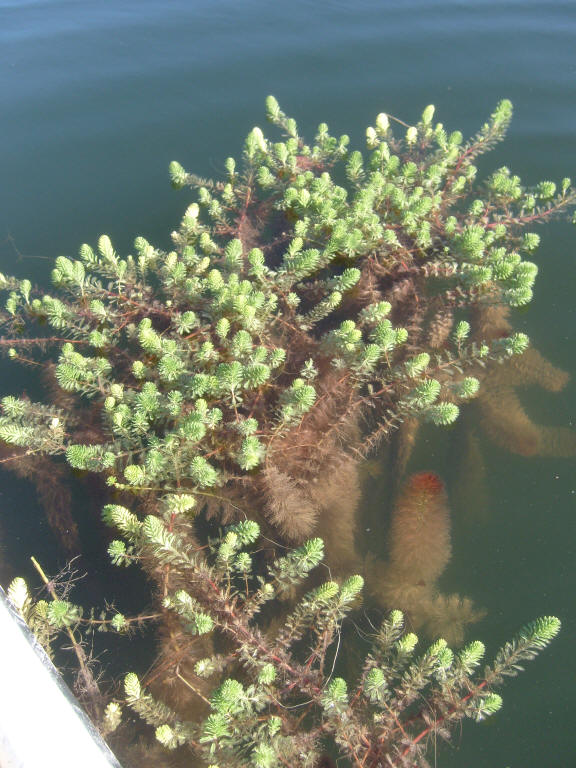
A dense group of plants in deep water at the east end of Meserve
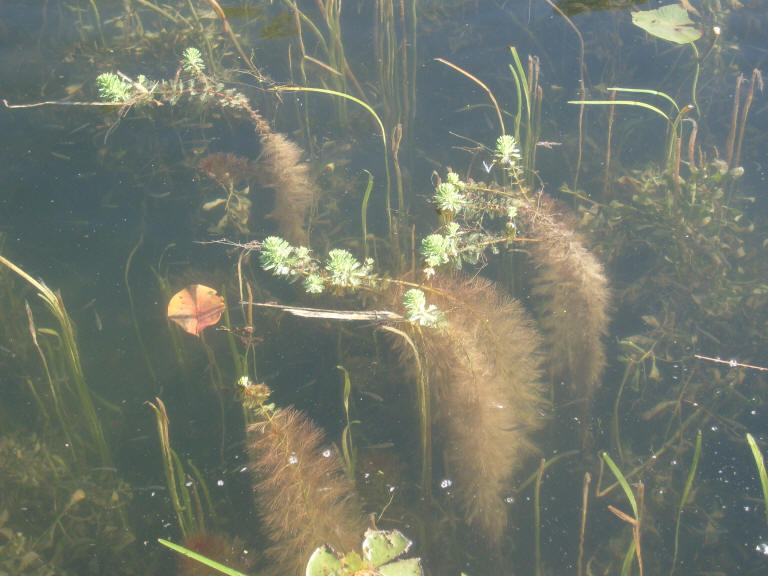
Aquaticum growing with Vallisneria, Illinois pondweed and White water lilies near the lake's east end
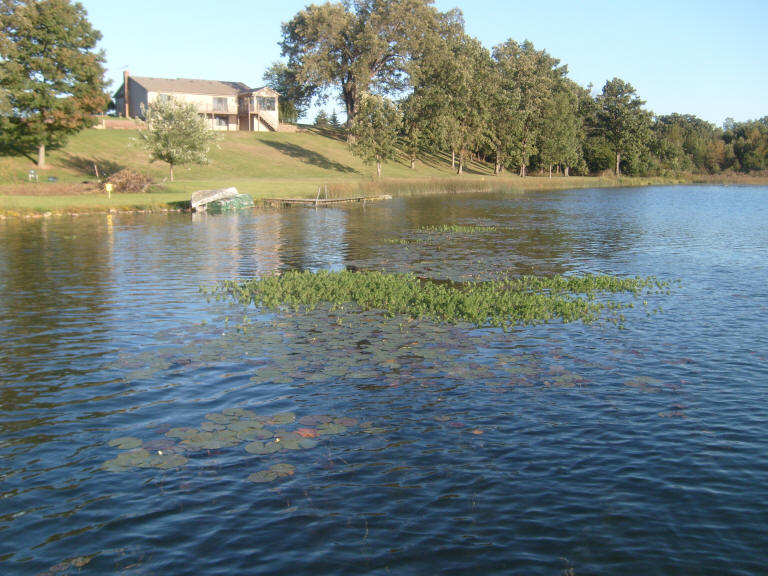
Emerged aquaticum plants are growing in a lily bed near the lakes northeast tributary delta
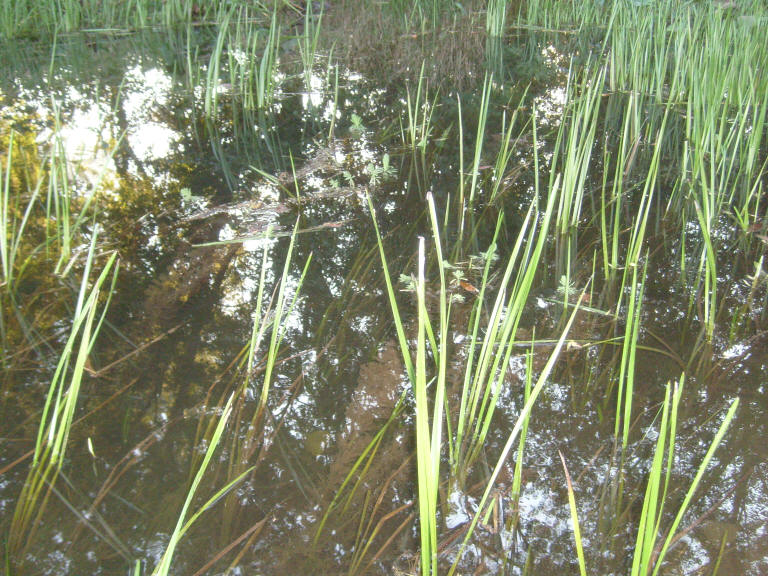
Outgoing aquaticum fragments have settled and taken root in the dredged portion of the lake's outlet stream
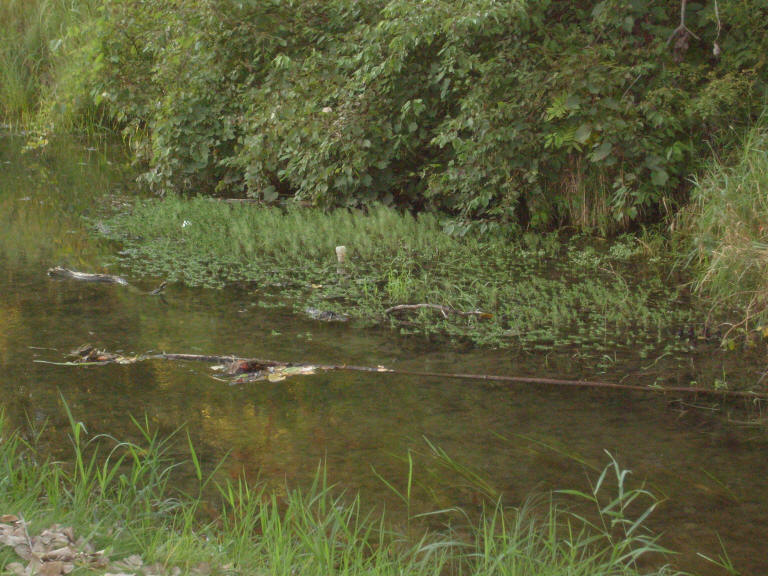
A dense colony in the outlet stream that was treated earlier in the season by IDNR but recovered
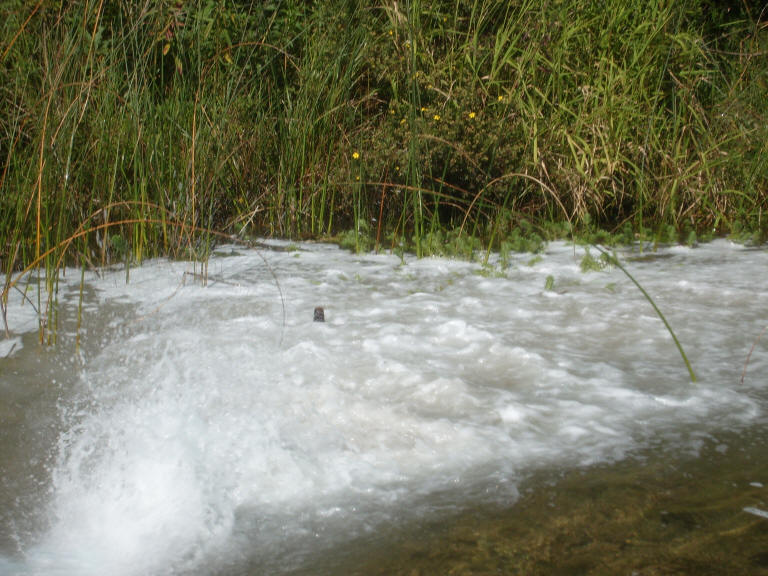
Sept. 17 Liquid 2,4-D and surfactant is applied along the lake's north shoreline
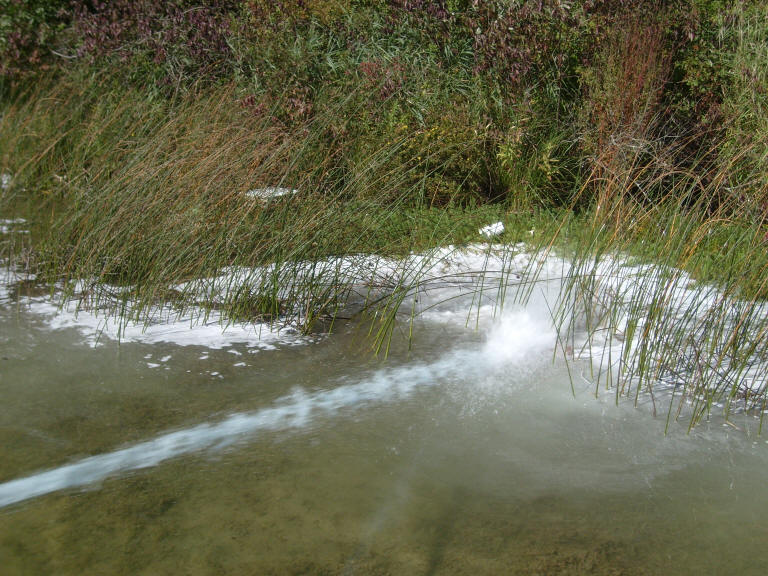
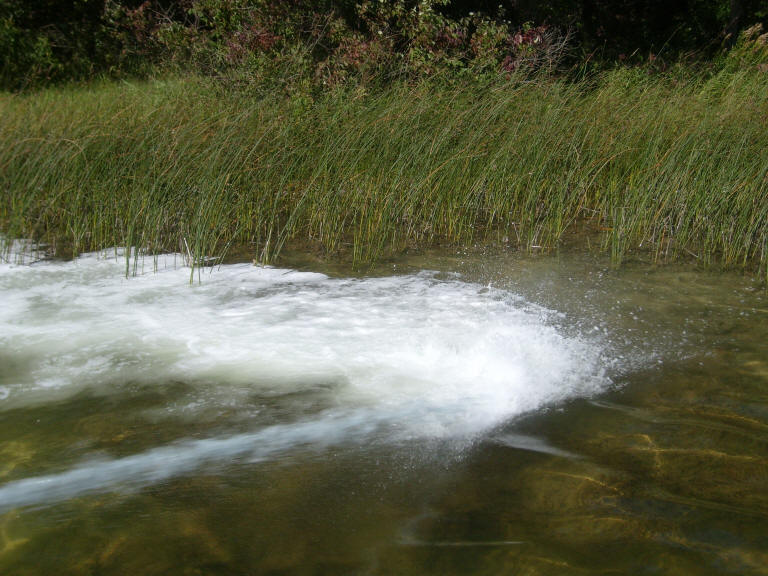
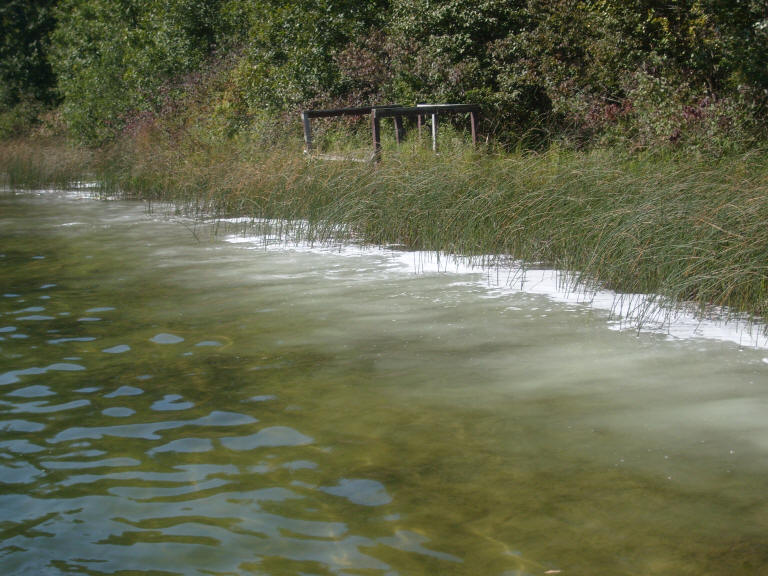
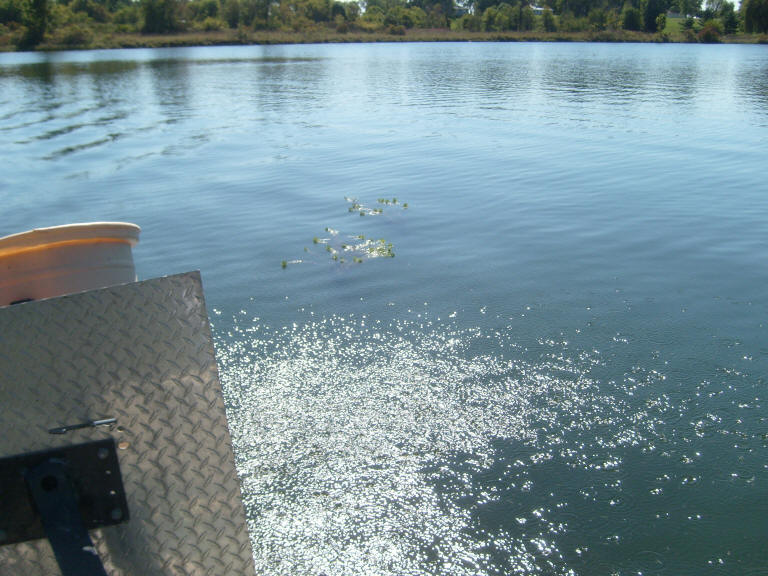
September 17, Granular 2,4-D is applied to deepwater plants at the lake's east end
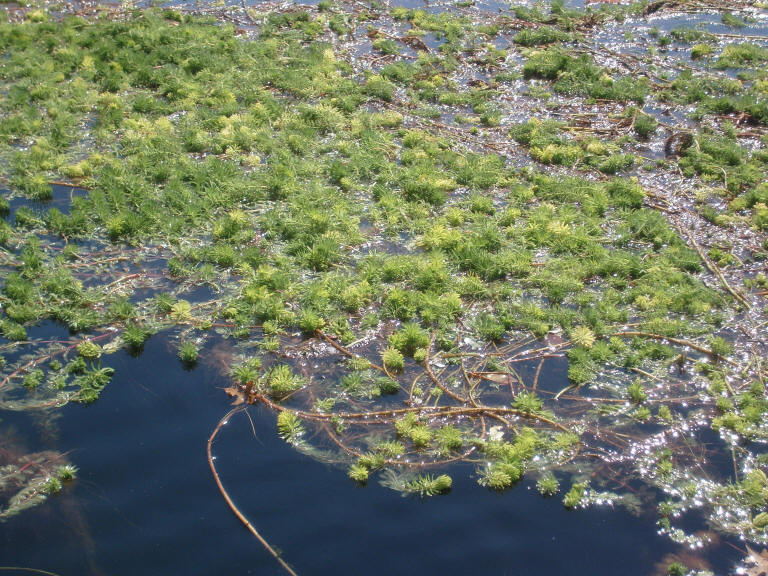
September 18, emerged plant tops appear to be laying down in response to treatment
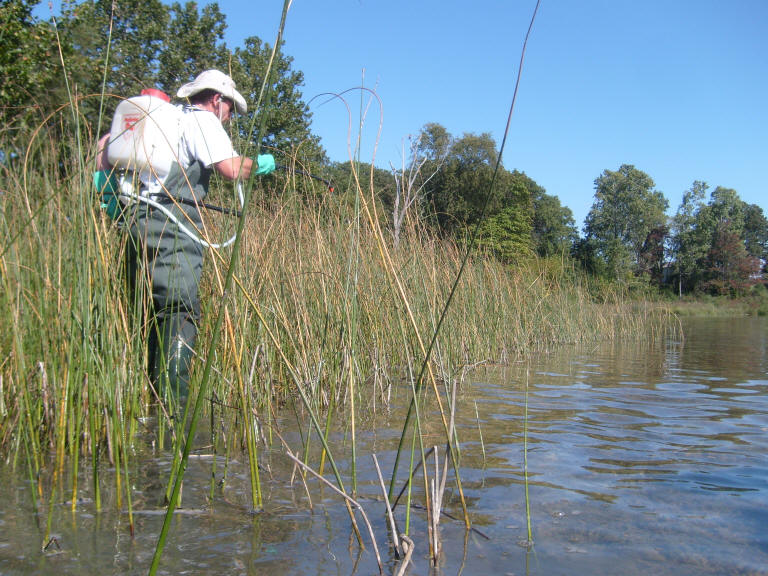
Backpack treatment is used on September 18 to reach plants in inaccessible areas
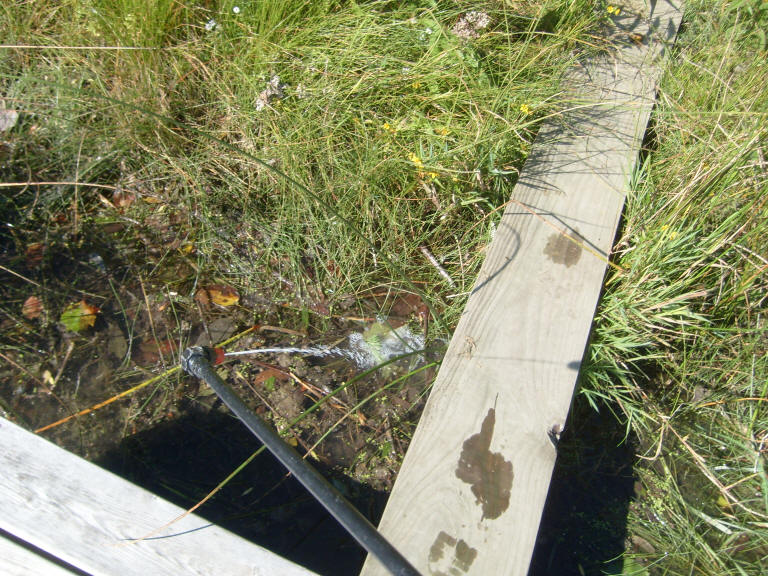
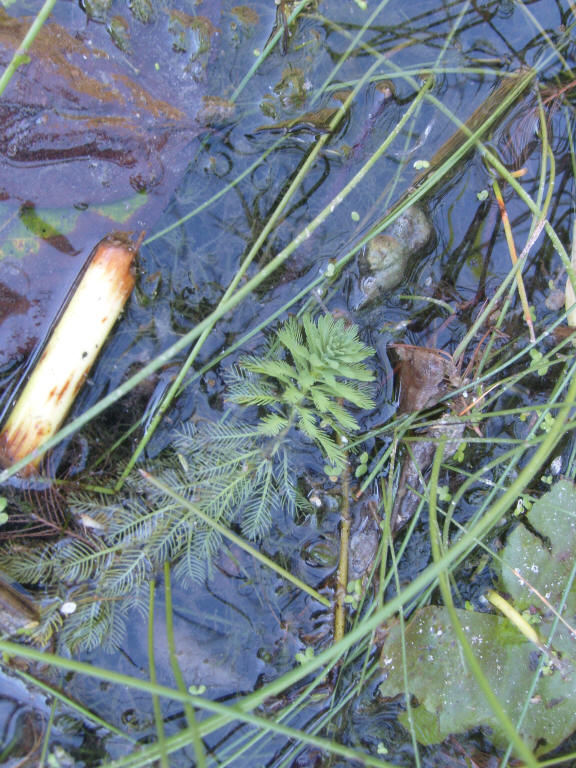
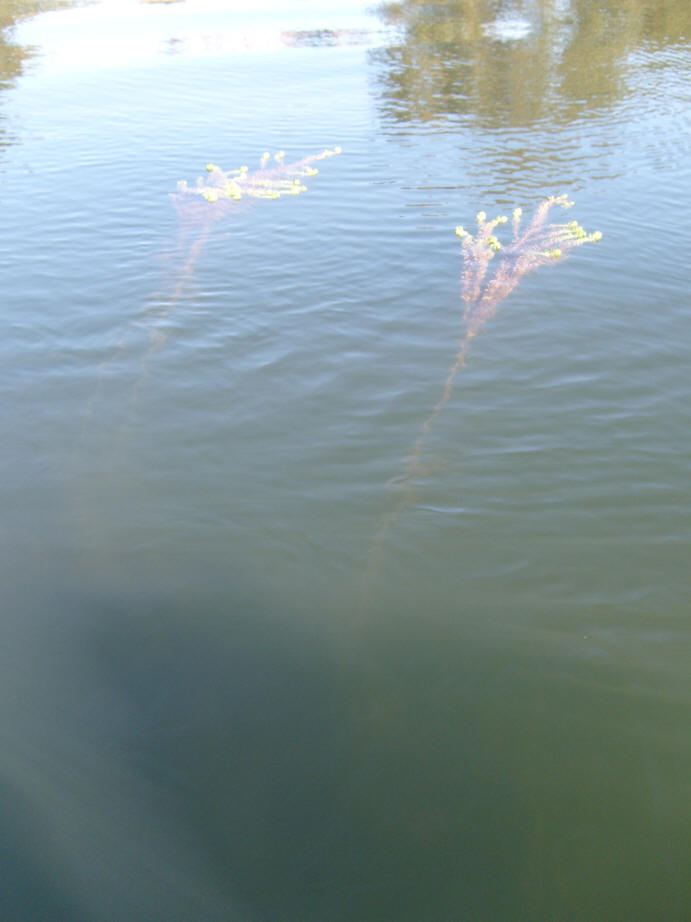
Single stalked deepwater plants with extensive branching near the surface
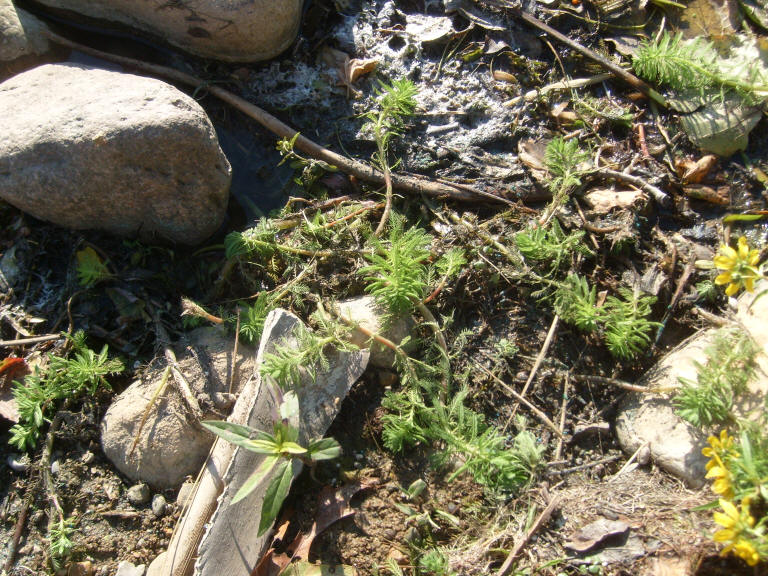
Plant fragments left relatively dry by receding lake levels appear to be able to survive for an extended period
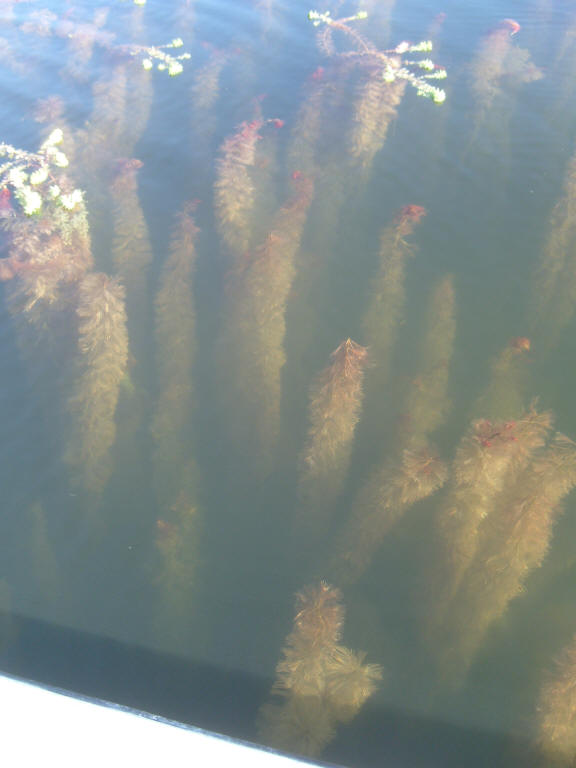
Deepwater plants stalks without emerged tops resemble native milfoil species somewhat, but are larger in diameter
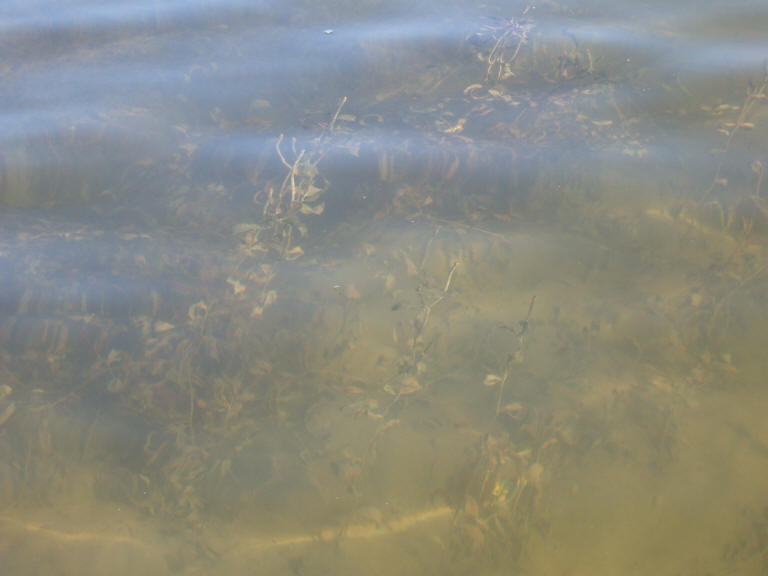
Illinois pondweed is a common native plant in Meserve in both deep and shallow areas
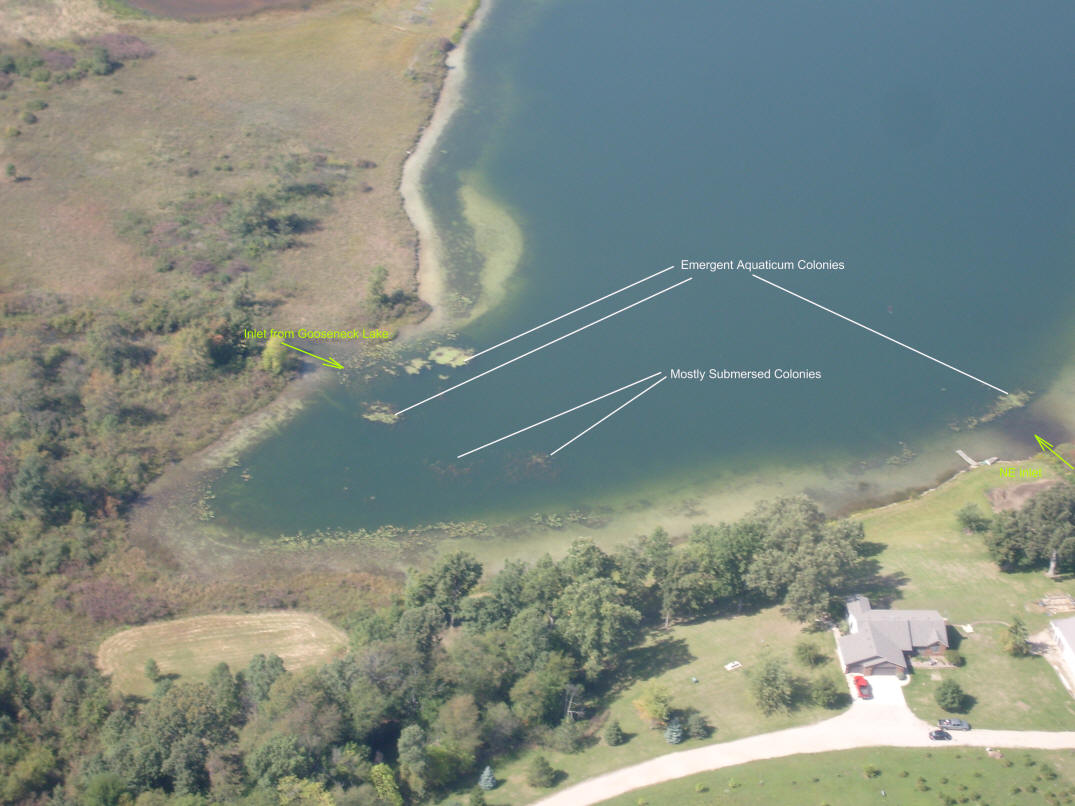
9-19-08 Air photo of the East End of Meserve Lake
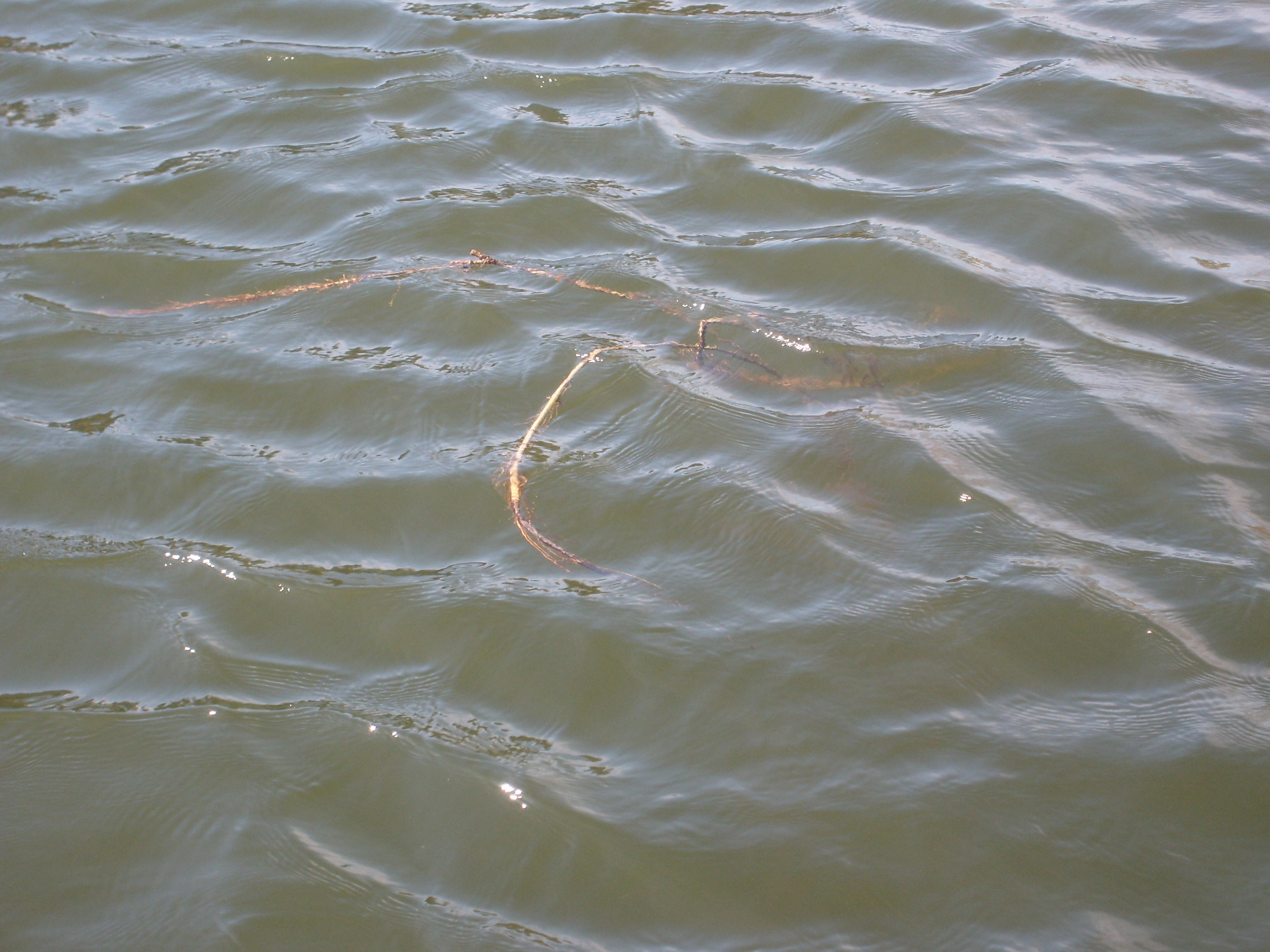
10-20-08, 33 d post-treatment. Most Aquaticum plants in deepwater areas treated at 200 lbs per acre Navigate 2,4-D were no longer visible. Some defoliated stems remained near the surface.
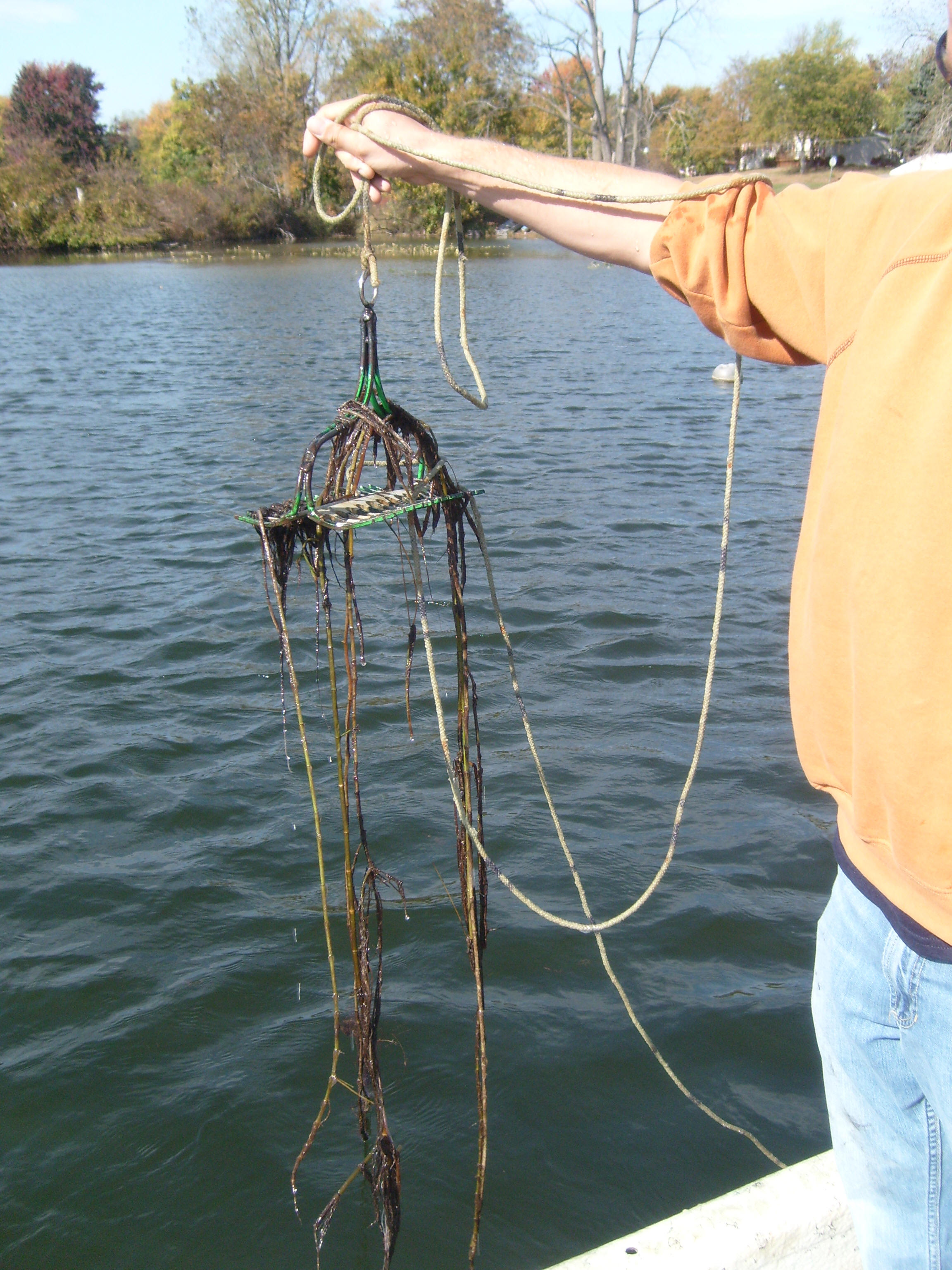
Rake tosses in areas where no plants were visible showed that stems of treated plants remained on the bottom in treated deepwater areas
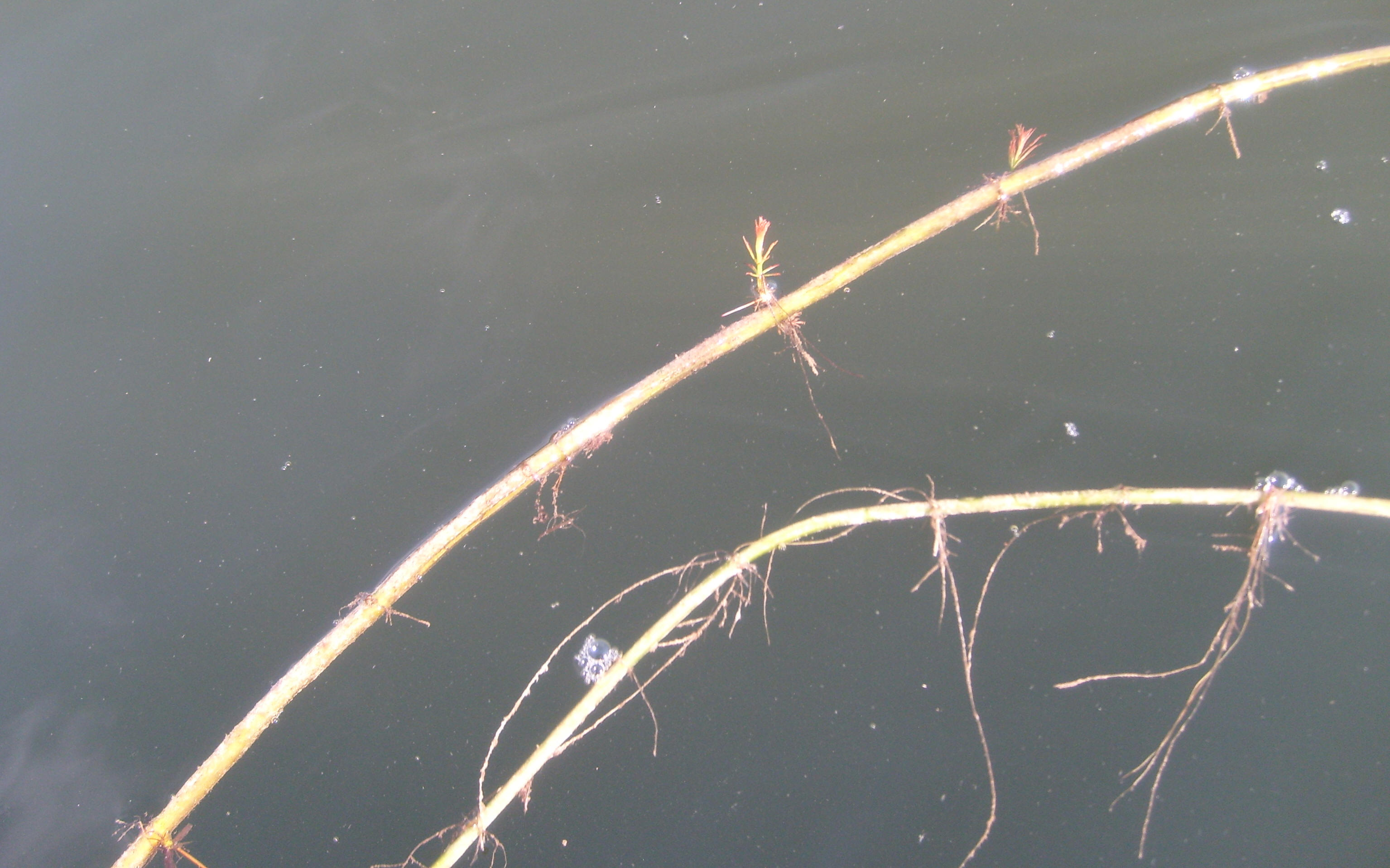
Some stems on treated plants appeared to have begun to develop new leaves
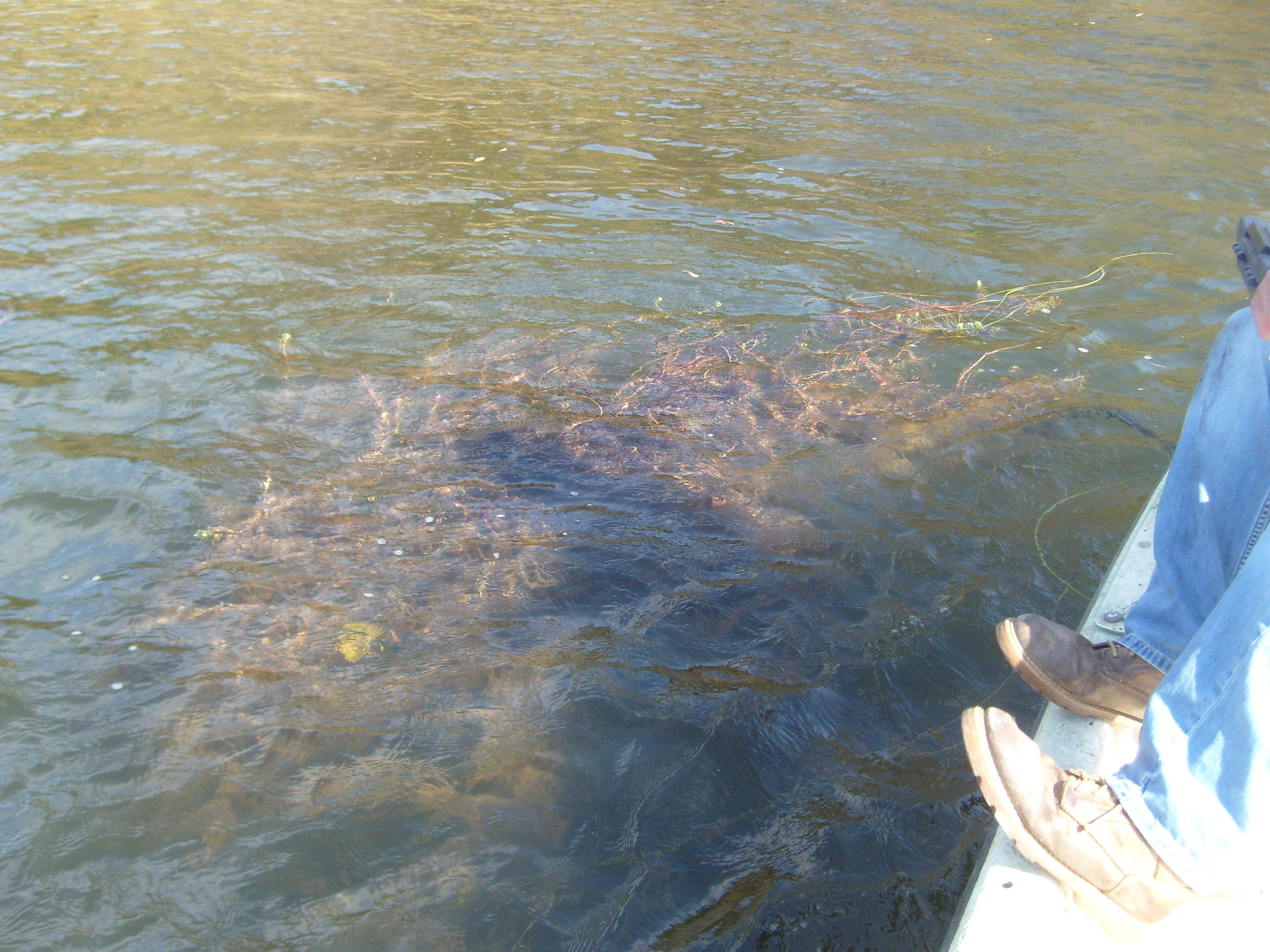
One small treated patch of aquaticum near the NE inlet had not completely defoliated

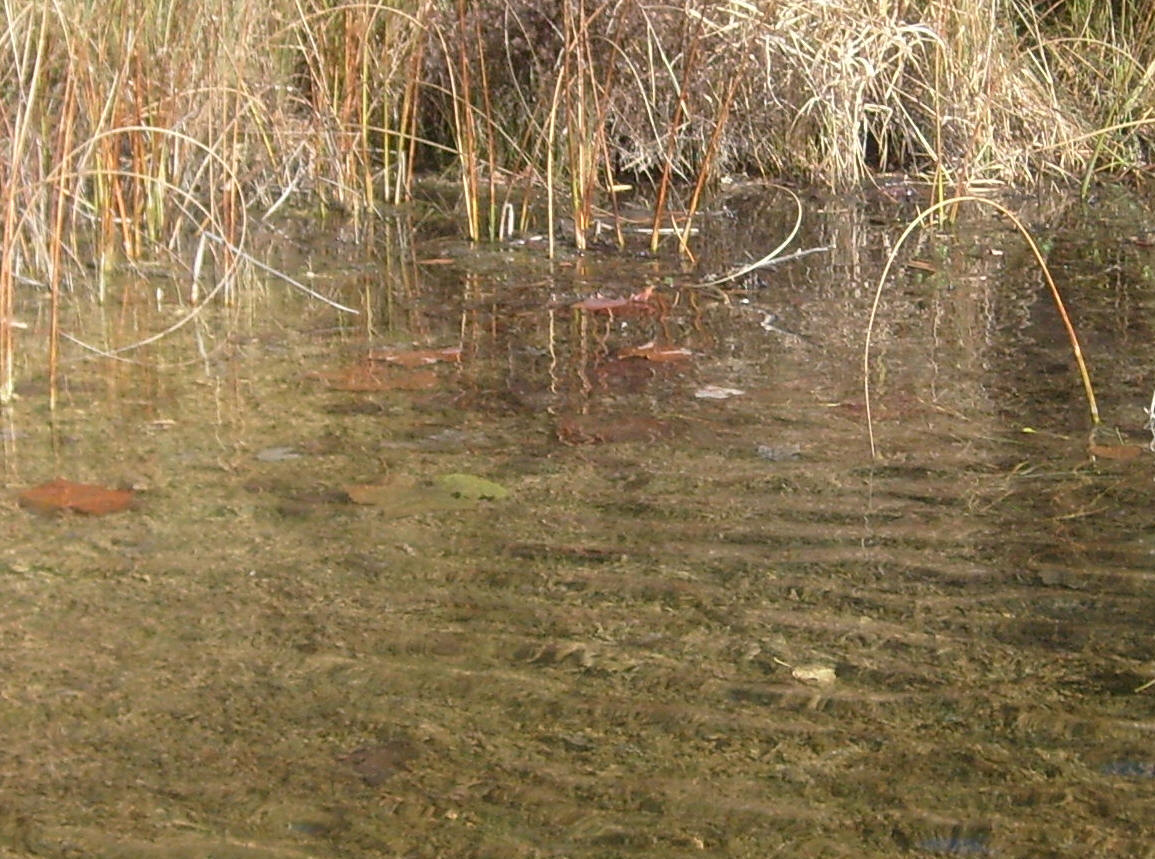
Parrot feather plants along both the north and south shorelines were greatly reduced

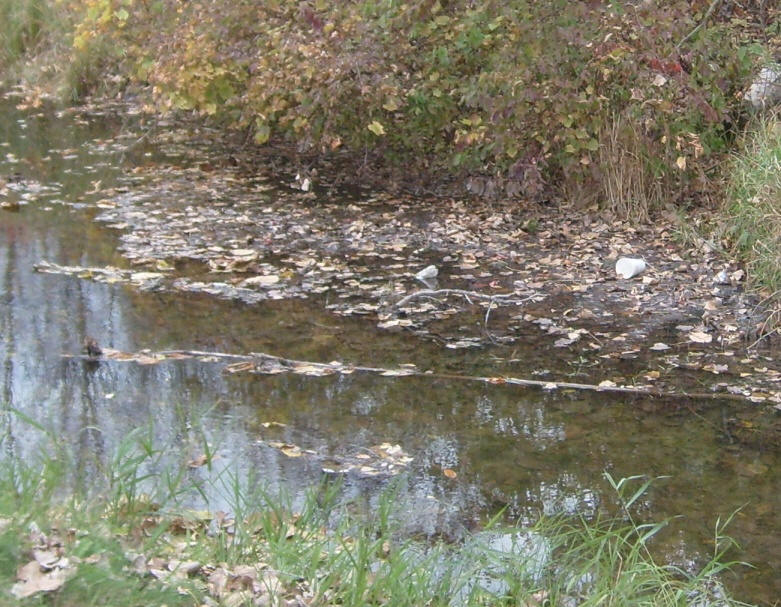
Aquaticum in the inlet and outlet streams responded well to treatment. Newly emerging leaves however were visible in this patch 33d post-treat.
This patch had already regrown since treatment by INDR in June of 2008.
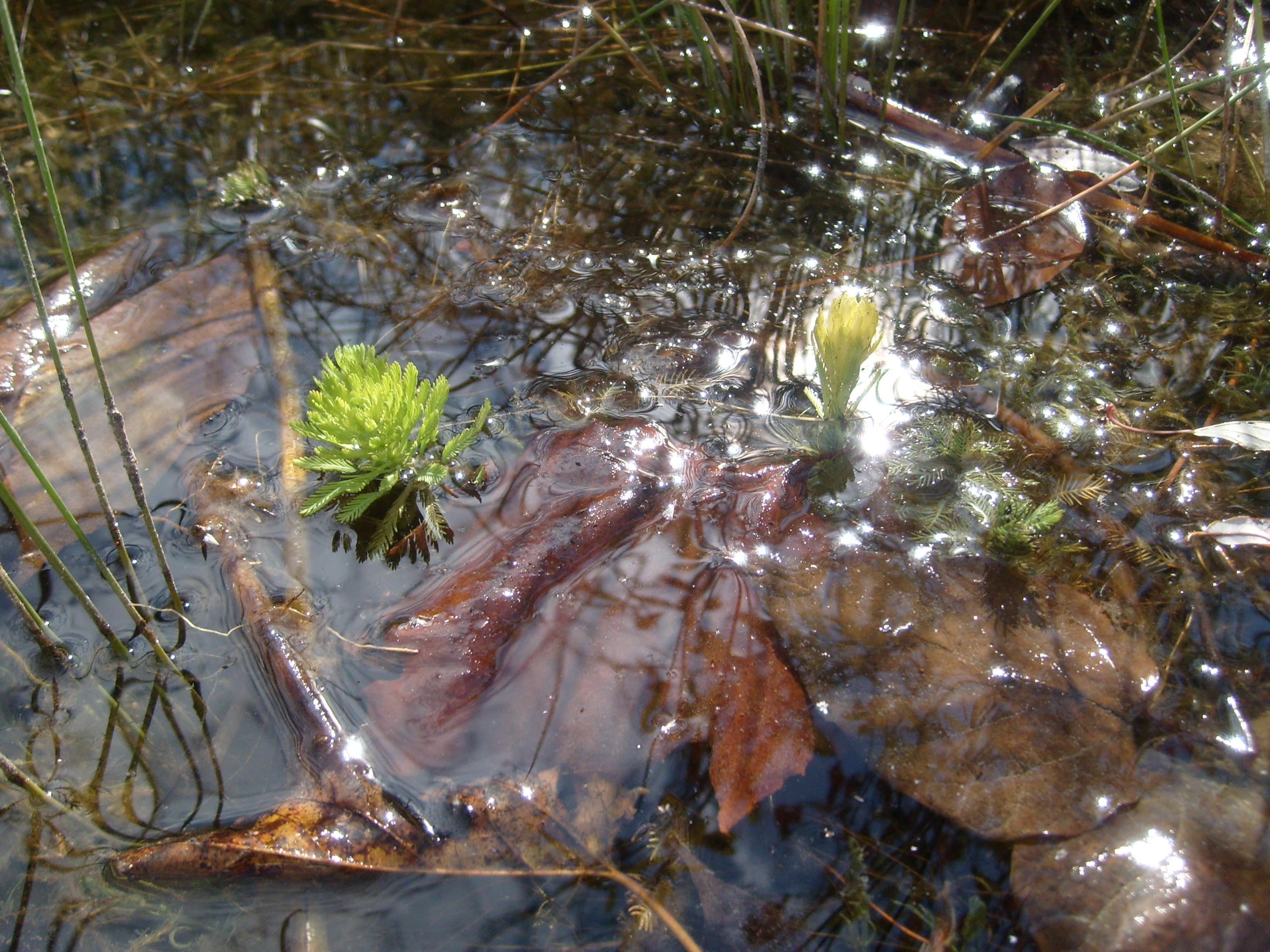
Emerged aquaticum plants though much fewer in the post-treatment period, could still be found in the inlet and outlet streams and along wetland shorelines.
The vast majority of these were not rooted.

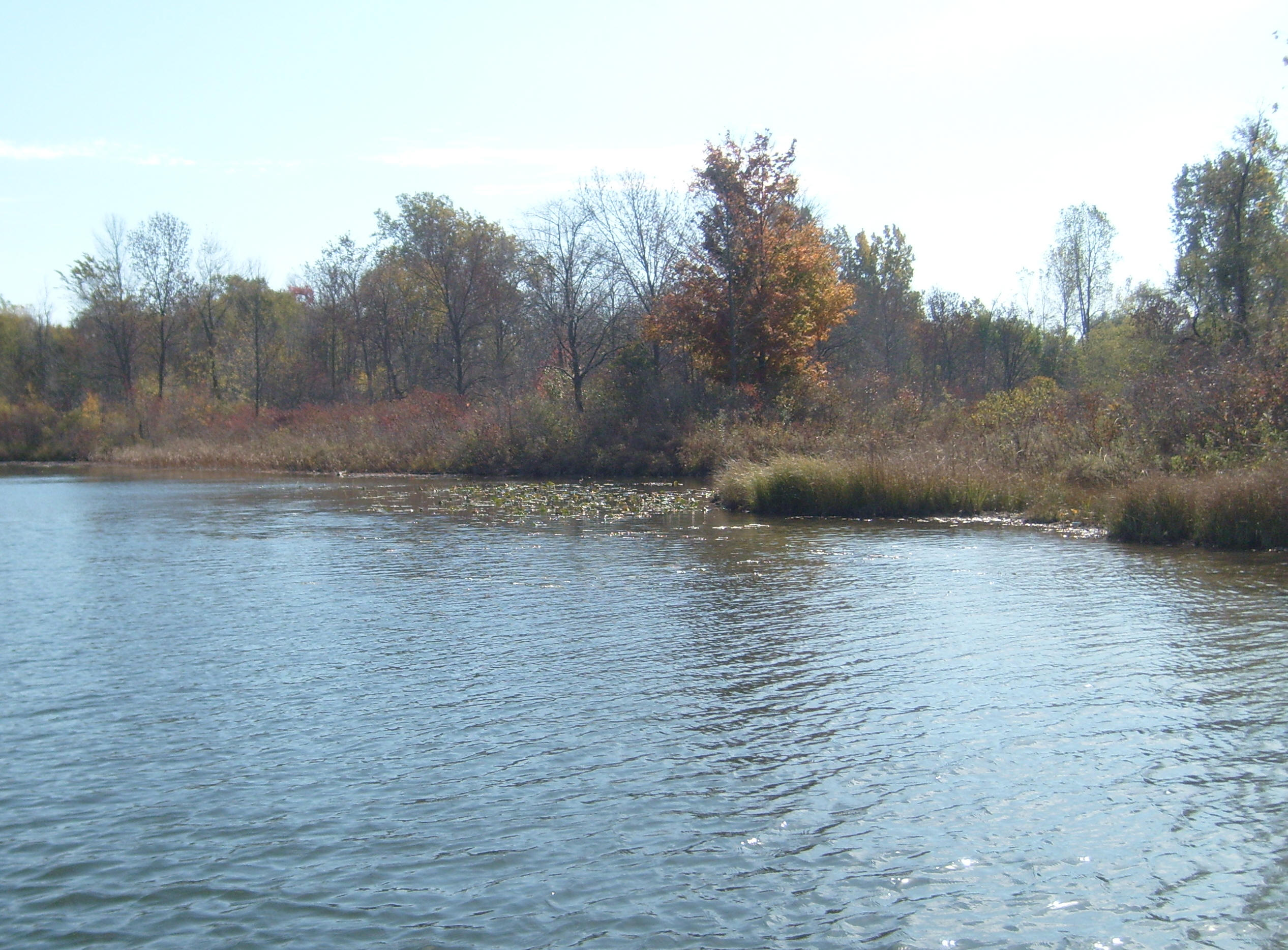
The largest emerged aquaticum colony, near the lake's SE inlet was gone in the post-treatment period
5/8/09 Pictures, Meserve Lake
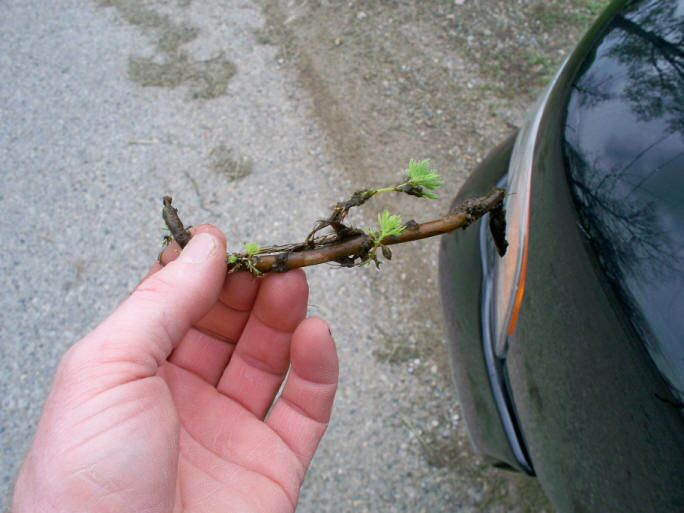
One loose plant stem section found resting on the mud in the outlet stream had started to produce new leaves. No other parrot feather was found in the inlet or outlet streams.
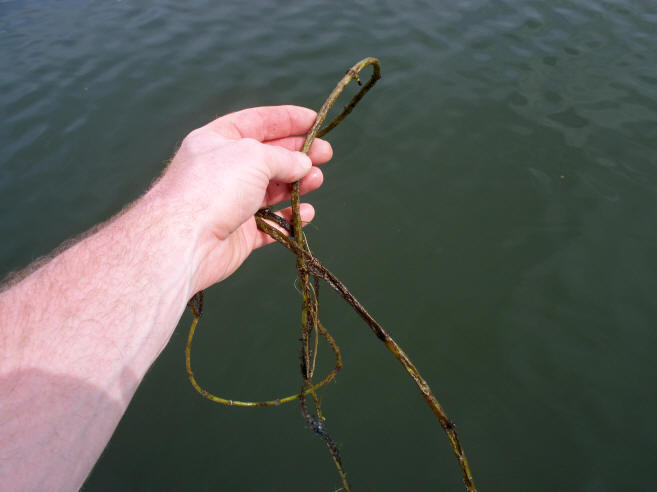
No parrot feather plants were visible in deep offshore areas that had been colonized in 2008. Rake tosses produced some of last years stems that were still laying on the bottom of the lake. Most did not show any new signs of growth.
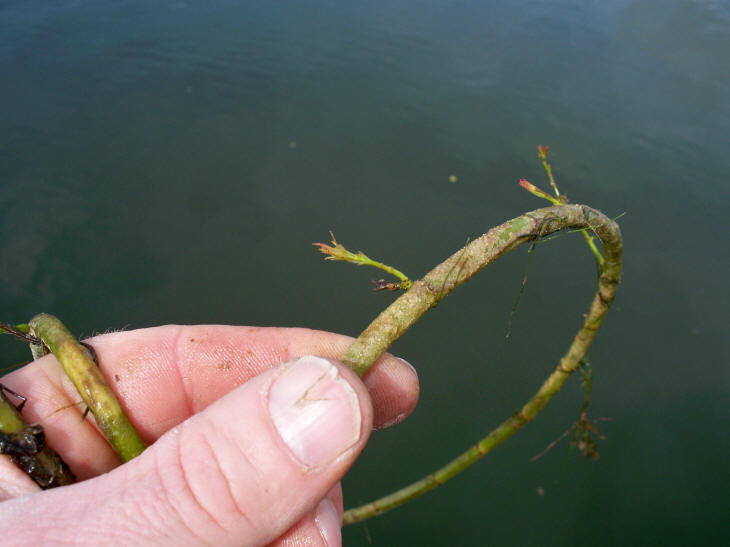
A few of the retrieved stems did show new growth beginning.